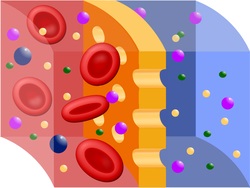Environment
The Science of Reverse Osmosis
by Samantha Greenbaum
The science of reverse osmosis may seem confusing, yet it is truly a remarkable feat of science that can be used to  create potable water from nothing but a salty pool. This simple yet magnificent process allows machines to desalinize water, recycle waste water, and even create a bit of energy. If you have always wondered how it works, here is a basic breakdown of the process of reverse osmosis and how it can affect your life and the future.
create potable water from nothing but a salty pool. This simple yet magnificent process allows machines to desalinize water, recycle waste water, and even create a bit of energy. If you have always wondered how it works, here is a basic breakdown of the process of reverse osmosis and how it can affect your life and the future.
How it Works
Osmosis is a fairly simple process that highlights the physical nature of water. Water is inclined to move through a semi-permeable membrane toward a more concentrated solution of water and something else (such as salt water), in order to dilute and weaken it. Put simply, water seeks equilibrium and flows naturally from areas of low concentration to areas of high concentration. If a portion of clean water comes in contact with salt water through a semi-permeable membrane, it will attempt to join forces in order to create a solution of one concentration throughout.
Reverse osmosis works very similarly, yet in reverse. Applying pressure to the highly concentrated liquid will counteract the natural osmotic force of the fresh water, and will cause the solution to pass through the semi-permeable membrane toward the clean water. But, because salt and other molecules in the concentrate cannot pass through the membrane (because they are too large), the fresh water will only be receiving more fresh water, leaving nothing but a solution of higher concentration on the other side.
Why This is Good
Imagine all of the possibilities! Reverse osmosis gives humans the ability to take naturally occurring salt water from the ocean or other underground sources and desalinize it through a fairly simple process in order to create fresh water suitable for drinking.
But wait: there’s more! Reverse osmosis isn’t simply used to create pure water from a salty solution. It is now the most important process used to recycle waste water from a variety of industries. In order to treat metals used in manufacturing, chemicals must be used that create a byproduct of extremely hazardous wastewater. Now, though, with reverse osmosis, these companies can recycle this water in order to create a potable liquid to drink or to release back into the environment, or even a clean solvent that can be reused for the same exact process.
Wastewater is a natural component of the human digestion process, and until the advent of reverse osmosis, it was simply disposed of in sewage treatment plants around the globe. As reverse osmosis grows in popularity and efficiency, though, it will eventually be possible to fully recycle all of the wastewater that is produced by humans throughout the world.
How This Benefits You
As humans continue to procreate, one of the biggest concerns is the limited amount of fresh water that can be utilized to sustain the growing population. Reverse osmosis helps scientists set their eyes on the vast expanse of the oceans, an endless source of previously non-potable water. With reverse osmosis, though, utilizers will soon be able to take these salty pools across the world, use a naturally occurring scientific process, and create drinkable water for all to taste.
Better for the World
Reverse osmosis is one of the most important scientific advances of all time. And while you may not see it happen, this process helps sustain the population of the world with the circular nature of recycling.
About the Author
Samantha Greenbaum is a health-conscious mother of two and self-proclaimed nature nerd. Samantha recommends Avista to anyone interested in reverse osmosis membrane performance and improvement services.




